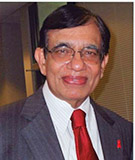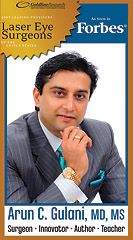
The Science of Organ Transplantation – Part I

First, a little of my personal story. Although it is an ever present fear, personal illness is something which we don’t often think about and one day when it appears, we are surprised. Which is what happened to me many years ago, when I woke up one morning with a headache. My blood pressure had shot up and my kidneys showed significant damage already. Suddenly, at the age of 48, I had become a sick man.
Unbeknownst to me, my body was being ravaged by a disease called “IgA Nephropathy (also called Berger’s disease, an auto-immune disease),” something which I always associated with pediatric age population. Consuming a healthy diet, doing regular aerobic exercises and staying away from alcohol except for an occasional wine and avoiding tobacco products I thought I would stay free from major diseases at least till I got old. “Not so,” my body seems to say. Indeed, my "perfect health" was illusory.
Fast forward to another five years, I found myself in kidney failure and needed a kidney transplant myself — the organ donated by my loving sister who had to come all the way from India. In spite of all the complications I experienced during the next few years, I recovered well and could continue working. Finally, when the 10th year anniversary of my ‘gift of life’ rolled in, a cherished landmark for every transplant patient, I truly felt on top of the world. A decade with lots of ups and downs. The transformation has been emotionally uplifting – from a life on the edge to a most fulfilling one. *
In the past when an organ in the body like kidney, liver or heart went into complete failure to function, the only treatment available was supporting the organ’s function with medications for some time. Many organs do develop acute (or short term) failure but can recover from it once the offending cause is taken care of. In the case of kidneys, a number of causes like reduced blood flow to the kidneys, certain medications, high blood pressure, trauma to kidneys, blocked urinary passages, etc., may lead to acute failure. With appropriate management, these patients generally recover. But chronic kidney failure is a totally different ball game that warrants specific treatment. And it has become more common all over the world. When I was talking to one specialist in India, he mentioned, “Chronic kidney diseases have become almost rampant here.” The primary reason is the steady increase in the incidence of hypertension and diabetes mellitus.
When a patient develops chronic kidney failure, the standard approach is to put them on dialysis. “Dialysis is the process of removing excess water, salt and impurities like toxins from the body when kidneys can no longer perform these functions naturally. This is also referred to as renal replacement therapy.” At present, there are two forms of dialysis. 1. Hemodialysis: An artificial kidney or hemodialyzer is used to remove the waste products and excess fluid from the blood. Blood is drawn into the artificial kidney through a special access called arteriovenous shunt (AV Shunt) usually inserted in the arm. 2. Peritoneal dialysis: This is done by inserting a plastic catheter into the abdominal cavity (peritoneal cavity), which is then filled with the special ‘dialysate’ fluid that circulates around the peritoneal membrane lining the cavity, which helps to draw the extra fluid and waste products from the blood into the dialysate.
Is dialysis the cure for kidney disease? No, it does the work of kidneys but the patient has to be on dialysis for his/her entire life. There are a lot of discomforts one has to put up with while on dialysis. Also, this restricts your movements since you have to report to hemodialysis center three times a week or do the peritoneal dialysis at home on a daily basis. But most importantly, the average life span of a patient on dialysis is only about seven to 10 years although some may live up to 20 years.
This is where “kidney transplantation” as the best treatment for chronic kidney failure emerges. At present, approximately 13 people die each day while waiting for a life-saving kidney transplant and over 100,000 people are waiting for a kidney transplant in the U.S., according to UNOS (United Network for Organ Sharing); that’s the sad part. The good news is that every year, the number of kidney transplants done in this country has gone up and in 2016, about 33,600 were successfully done but majority from cadaveric donors. Since there are not enough organs to go around, many would die without getting one. Hence, it’s important to encourage living-related (or unrelated) donors to come forward to put a dent into this problem. A lot of potential donors may not be aware that only one kidney is needed to live a normal, healthy life, so anybody can donate one.
* Ref: “Second Chance – A Sister’s Act of Love” by M. P. Ravindra Nathan, published by Outskirts press
M.P. Ravindra Nathan, M.D., is a cardiologist and Emeritus Editor of AAPI Journal. His book “Second Chance – A Sister’s Act of Love” was recently released. (www.amazon.com or www.bn.com).
EYE CARE

CHEATERS Beware!
Wish you all a wonderful New Year!
As we start the year 2019, I wish to dedicate my innovations toward the final frontier of eye surgery; Presbyopia (reading glasses = cheaters) not only by honing nearly three decades of surgical innovation in this direction but also by building the world’s first Presbyopia Vision Suite.
Have you ever held an iPhone, iPad or newspaper as far as your hands could reach and were still barely able to read? Have you wished there was more light in a restaurant as you looked at the menu? Congratulations! You are now part of the “Elite” club of people over 40 and have a condition called “presbyopia.”
In this article, we shall understand why we end up needing reading glasses as we ‘mature” into our 40s and share new treatments for the same. So, put on your “cheaters” and read on.
In a young eye (less than about 40 years old), your natural lens is fully transparent and also flexible. The lens muscles can easily change its curvature from steeper to flatter, and give you clear vision at all distances. But during middle age, usually beginning in the early 40s, the lens becomes less able to change its shape, so people experience blurred vision at near points, such as reading, sewing, or working at the computer and smart phones. This is known as presbyopia.
You can understand this mechanism as an age-related loss of “zooming power” (“tele & wide,” like a camera) of your natural lens inside your eye (hence you zoom with your arms – short hands syndrome? ).
Given time, presbyopia happens to everyone. Also, you can have other associated conditions (like cataracts, nearsightedness, farsightedness or astigmatism) and presbyopia at the same time. In fact, you can even have 20/20 vision, but still need reading glasses because of presbyopia.
Having worked with over 20 different techniques and combinations using technological evolutions over time, I can say with confidence that most presbyopia patients could be candidates for uniquely designed surgery to see without glasses or contact lenses.
Since this malady will affect almost everyone as they age, why not raise this surgery event to an “experience?” I do believe such a vision suite is the future of eye surgery and will become the predominant ambience of eye surgery worldwide.
It’s a design concept where patients are comfortable, relaxed and excited rather than apprehensive and in pain. With a no-injection, no-pain approach, they could address their frustrating vision issues and aim for vision freedom for each patient’s best potential and, in many cases, even beyond 20/20.
Various options, including “no-cut,” “no-blade” laser precision techniques can be used for patients just with presbyopia and even those with associated nearsightedness, farsightedness and astigmatism.
In patients who do not have a cataract yet, you can get evaluated for advanced laser techniques to optically manipulate vision, so both eyes blend to see at all distances using spherical aberrations and wave fronts as a higher form of vision correction. Corneal inlays are also being investigated for use in this clientele. For patients who are used to mono-vision with their contact lenses (non-dominant eye is focused for near while dominant eye is focused for distance), they can have this arrangement replicated using highly precise lasers.
Refractive Lens Exchange (RLE): Early Cataracts
Further with age, when your natural lens in the eye becomes a cataract (cloudy), a “no-stitch” -“no-injection” and “no blade” cataract-like procedure with new generation multifocal/progressive lens, implants like ReStor, Symfony or Crystalens (very much like bifocal/multifocal/progressive glasses) and even astigmatism-correcting lens implants (Toric) can permanently clear your cloudy vision (from an early cataract). And, in most cases, they will restore your ability to zoom (read) without glasses.
These lens implants are permanently placed inside your eye and replace the cloudy natural lens (early cataract) to aim for vision at all distances for the rest of your life. Thus, while addressing your early cataracts, not only presbyopia but also correction of your associated nearsightedness/farsightedness and even astigmatism be attempted with the same procedure.
Additionally, combination of advanced laser vision surgery can be staged following early cataract surgery (RLE) to complete the vision goal for your individual eye.
By this token, even patients who have had cataract surgery in the past can avail of advanced laser techniques to help correct their refractive errors (remaining glasses prescriptions) and presbyopia to lead a life free of glasses.
As our world comes closer to our circle of vision with smart phones, iPads, Facebook updates and Tweets, we can choose our options to gain vision freedom in this final frontier of vision corrective surgery.
So “cheaters” beware; for presbyopia today, there is no “escape;” you have my full focus and undivided attention!
Arun C. Gulani, M.D., M.S., is director and chief surgeon of Gulani Vision Institute in Jacksonville. He can be reached at [email protected] or visit www.gulanivision.com